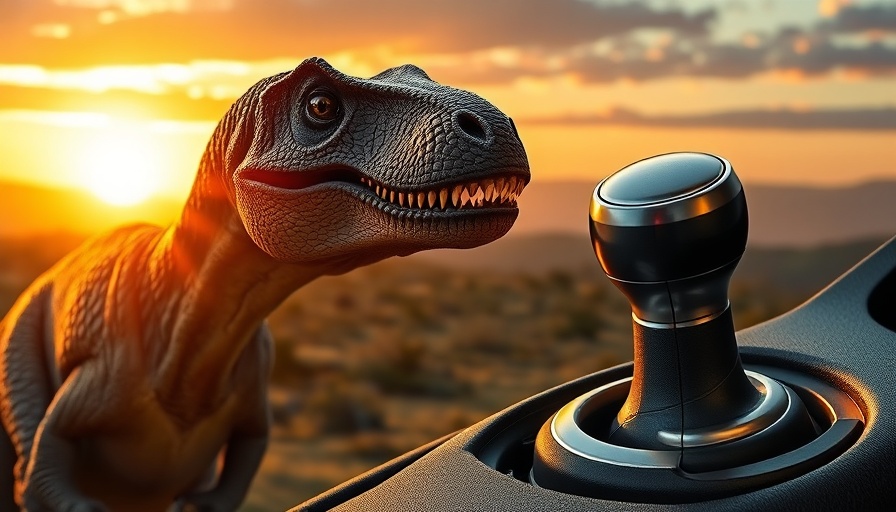
The Evolution of Transmission: A Shift in Driving Trends
The stick shift has played a pivotal role in automotive history, serving as the keystone for drivers seeking a hands-on, engaged driving experience. However, as industry trends change, the traditional manual transmission has seen a steep decline.
Understanding Manual vs. Automatic Transmissions
Historically, the manual transmission was the go-to choice for car enthusiasts and everyday drivers alike. Manual transmissions require the driver to actively engage in gear changes through the use of a clutch pedal and gear shifter, fostering a sense of connection to the vehicle. This contrasts with automatic transmissions, which rely on hydraulic systems to shift gears automatically. Bill Kirkpatrick, an ASE and Volkswagen master technician, emphasizes that while driving a standard requires more skill, it provides greater control in various driving conditions.
Statistics and Sales: The Downward Trend
Current data demonstrates a stark transformation: in 2020, manual transmissions represented a mere 2% of car sales in the U.S., a sharp decline from over 80% in the late 1950s. This shift leaves many to ponder the long-term viability of manuals in a market dominated by automatics. As noted by Cars.com, from 2010 to today, the percentage of new vehicles sold with a stick shift plummeted from 3.4% to just 1.3%. Automakers are increasingly opting out of producing manual cars due to low consumer demand, preferring to allocate resources towards developing more efficient automatic systems.
The Driving Experience: Nostalgia vs. Practicality
Many driving enthusiasts maintain that changing gears by hand creates a more engaging experience compared to the conveniences of today’s automatics. However, the reality is that automatics have significantly improved over the years, outperforming manual transmissions in speed and efficiency. Modern automatics can shift faster than a human ever could, effectively disabling one of the last strongholds in the case for stick shifts.
Changing Technologies and Consumer Preferences
The automotive industry is witnessing rising trends toward electric vehicles, which often operate without a need for a multi-gear transmission. Electric cars typically utilize a single-speed gearbox. As Tyler Duffy points out, with the advent of electric and hybrid vehicles, the practicality of maintaining a manual transmission becomes further diminished.
Commercial and Economic Factors Driving Change
Cost efficiency plays a critical role in automotive production. The manual transmission’s simplified engineering once made it an attractive low-cost alternative. However, with the significant increase in development costs for electric vehicles, manufacturers find that incorporating manual transmissions adds unnecessary complexity without substantial market demand. As a result, the number of models featuring a manual option continues to dwindle, exacerbating the extinction of the stick shift.
Community and Culture: Holding onto Stick Shifts
The manual transmission has garnered a loyal community of drivers passionate about preserving this dying art. Car enthusiasts bond over shared experiences and nostalgia for the tactile feeling of a stick shift, akin to vinyl enthusiasts reminiscing about the analog sound. However, as society gears towards ease and automation, the community's voice grows faint amid the push for technological advancement.
Facing Reality: What Lies Ahead for Manual Transmissions?
The road ahead for manual transmissions appears increasingly bleak. As technology pushes toward greater convenience, the stick shift may soon become a relic of the past—supported only by a dwindling pool of enthusiasts. While there may always be a niche market for performance cars equipped with manual transmissions, the majority of consumers today favor the ease and efficiency of automatic vehicles.
Though the prospect of an end to manual transmissions may bring a pang of nostalgia, it is essential to acknowledge the evolution of driving as it aligns with modern lifestyles and preferences, paving the way toward a future dominated by advanced vehicle technologies.
So what can drivers do? Look to the burgeoning electric future with an eye on performance—be it in stick shifts or automatic innovations. Enthusiasts can encourage car manufacturers to retain manual options in select models, ensuring that the memories of the stick shift vehicle transcend generations.
As we continue to embrace new driving experiences, let's journey into the future of automobiles encouraged by curiosity rather than sadness. Perhaps trying a manual one more time might spark a taste of the traditional joy of driving.
 Add Row
Add Row  Add
Add 




Write A Comment